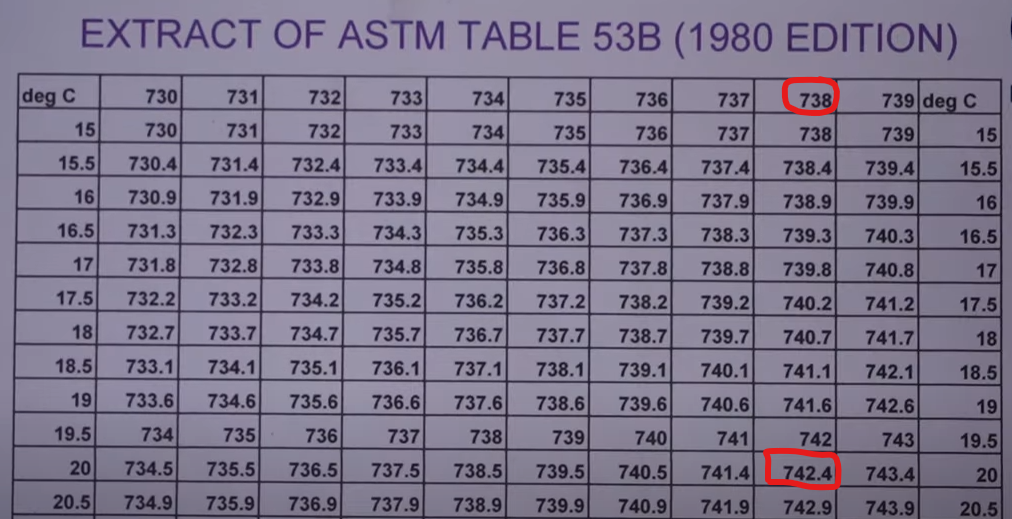Sometimes we wonder that ideally What Should be the Density of Petrol? How important is the role of petrol density for your car engine? How are they measured? Whether the density has any direct relationship with fuel quality or not? Etc. etc. In this article, get all your doubts clarified with theory and video.

Table of Contents
What Should be the Density of Petrol
Indian Government has set a BIS standard range of 730-770 Kilogram per cubic meter for Petrol. But, if your real objective is to understand that on a lower side what should be the density of petrol ideally, then its minimum 750+ Kg/m3.
However, to understand comprehensively that what should be the density of petrol, the petrol density should not be seen in isolation as it depends on temperature. As temperature rises, the volume of petrol increases and proportionally the density decreases. The criterion suggests that before the test is run, the petrol must be stored for 46 minutes at a temperature of 150 Celsius. Now here comes the trick, let us understand.
It’s crucial to remember that rise in each degree Celsius corresponds to a 1.2-liter increase in petrol per 1000 litres. Let’s say that the temperature is 250 Celsius when filling a 10000 liters tanker. When the tanker reaches the petrol pump and suppose the temperature there is 300 Celsius then it is going to have an additional [ 1.2 ltr * (10,000/1,000) * (300-250) ] 60 litres of petrol.
At the moment of departure, the tanker carries an invoice which indicates the density each time it leaves the depot. So, the tanker driver is already aware of the fuel density he is transporting. Here comes the petrol mafia. To keep the density level constant, the mafia steals the extra petrol and adds other mixtures, such as pentane or hexane in nexus with the oil company’s transport and other employees.
So, an ideal or standard density of petrol as a single number is just a myth. It is actually created by the oil companies as an eyewash marketing campaign to show transparency and gain consumer trust. Petrol density is not a single number and it varies with temperature. The actual ideal density of petrol can be measured from ASTM table which provides the estimated petrol density matrix with respect to every 0.5 0C rise in temperature.
How to Measure Density of Petrol along with Quality and Quantity
After having a thorough understanding on what should be the density of petrol, now we must understand the step-by-step process of how to measure quality, density and quantity of petrol while buying it from the petrol pump. Many of us think that we can’t conduct any test on petrol at fuel station, which is not true. You can test the quality, quantity and density of fuel at any petrol pump any time you want. Just follow the below steps to conduct such tests:
- Petrol Quality Check: First, take a white filter paper and release a drop of petrol from the nozzle on it. The petrol drop will be soaked and spread over the filter paper. If you don’t see any kind of stain after 2 minutes and the filter paper gets dried, then consider the petrol to be of pure quality.
- Density of Petrol Check: To estimate the density of petrol, fill the fuel in a clean and transparent 500 ml measuring jar. Emerge a hydrometer in the measuring jar that was filled with petrol and then measure the temperature of the fuel using a thermometer. Suppose you found the temperature is 200C. Now use the below ASTM table to find the real density.

Use the above ASTM table from where 150 C density is achieved. At 200 C the density is showing as 742.4 Kg/m3 as per the table. Now compare this density with the one entered in the density register. If the difference is within plus or minus 3 Kg / m3, then it means that the density is right.
- Quantity of Petrol Check: In the similar manner, to check the quantity, certified 5 litre measuring jars are available at all petrol pumps. In case you have any complaint or suspicion regarding the quantity of petrol, you can measure the fuel by filling it from nozzle in this jar. If the jar is filled up to the brim, it indicates that the quantity is right in every respect.
You can check the quantity, density or quality of the petrol at any time if you wish to or if you have any suspicion on the pump’s activity. You have the full legal right to do that.
How to Measure Quality, Density and Quantity of Petrol Video
The Impact of Petrol Density on Your Vehicle
Now we know that what should be the density of petrol and how to measure it, but what if petrol density is low? So, we also need to understand what could be the impact of varying petrol density on your vehicle.
Fuel Efficiency and Consumption
Petrol density has a direct impact on your vehicle’s fuel efficiency. Understanding this relationship can help you save money and reduce your carbon footprint by choosing the right petrol for your vehicle.
Engine Performance
The density of petrol affects the performance of your vehicle’s engine. A mismatch between the required density and the actual density of the petrol can lead to engine knock and reduced power output.
Emissions and Environmental Implications
The environmental implications of petrol density are significant. Choosing the right petrol can reduce harmful emissions and contribute to a cleaner environment.
Conclusions
Hope you find this article useful in clearing all your doubts regarding what should be the density of petrol. The density of petrol is a crucial factor in ensuring the efficient and optimal performance of your vehicle. By understanding what should be the density of petrol, its importance, how to calculate density accurately, and your consumer rights, you can make informed choices and protect your interests as a consumer.
For any further query on what should be the density of petrol or related topics, kindly leave a comment below in the comment section or visit our website.
You may also be interested in knowing:
How to Prepare Oats for Weight Loss, Muscle Gain, Babies, Pregnancy & Diabetic Patients
How to Prepare Detox Water for Good Health, Weight Loss & Clear Skin – 13 Recipes
How to Increase Hemoglobin in a Week Vegetarian – Top 10 Foods
Should I Buy Flowers on the First Date? Get Clarity with 5 Choices
FAQs
Q1. What should the density of petrol in terms of kg per litre?
A. Density of petrol in terms of Kg per litre is 0.73 – 0.77 Kg / Litre.
Government regulation-wise standard density range for petrol is 730-770 Kg / m3.
1 m3 = 1000 litres, So, after conversion in Kg per litre the density is 0.73 – 0.77 Kg / Litre
Q2. What is the requirement of measuring density of petrol?
A. The density of petrol, is typically measured using a device called a hydrometer. This instrument measures the relative density of a liquid compared to water, and is often used in the automotive industry to ensure that fuel is of the correct quality and consistency. The specific requirements for measuring the density of petrol may vary depending on the location and application, but generally the process involves taking a precise measurement of the liquid’s density at a specific temperature and comparing it to a known standard.
Q3. Is there any relationship between density and quality of petrol?
A. Yes, there is a relationship between the density and quality of petrol. High quality petrol typically has a higher density, which can result in better fuel efficiency and performance of an engine. Low density petrol can result in lower fuel efficiency and performance. Additionally, higher-density petrol is typically more expensive than lower-density petrol.
The density of petrol can vary depending on the type and blend of the crude oil used to make it, as well as the refining process. It’s also worth noting that density is not the only factor that affects petrol quality. Other factors like octane rating, sulfur content, and additives can also affect petrol’s performance and quality. It’s important to consider all of these factors when choosing petrol for your vehicle.
Q4. What is the Xtra Premium Petrol Density?
A. Density of XP petrol varies with product type but generally ranges between 745 to 764 Kg per cubic meter (kg/m³) or between 0.745 to 0.764 gram per cubic centimeter (g/cm³).
Q5. How does the density of a fuel affect the efficiency of an engine?
A. If the fuel density is lower, the fuel mass will also be lower for the same volume of injected petrol into the engine. When less fuel is supplied to the vehicle’s engine during the combustion process, the stoichiometric ratio is impacted and the fuel-air combination becomes lean, which periodically reduces the engine efficiency.
Q6. Does density of petrol affect mileage?
A. Yes, the density of petrol has an effect on mileage. Higher-density petrol contains more energy per unit volume, resulting in better mileage. This is due to the fact that denser fuel produces more power when consumed in an engine, allowing the vehicle to travel greater distances with the same amount of petrol. However, factors such as engine design, driving style and quality of road also play a significant role on mileage.
Q7. What Should be the Average Density of Petrol?
A. The average density of petrol is approximately 740 Kilograms per cubic meter (kg/m³) or 0.74 kg/litre or 0.74 grams per cubic centimeter (g/cm³) at 15 degrees Celsius, though it can vary slightly based on the specific formulation and temperature.
4 thoughts on “What Should be the Density of Petrol? All 5 Wise Things You Need to Know”